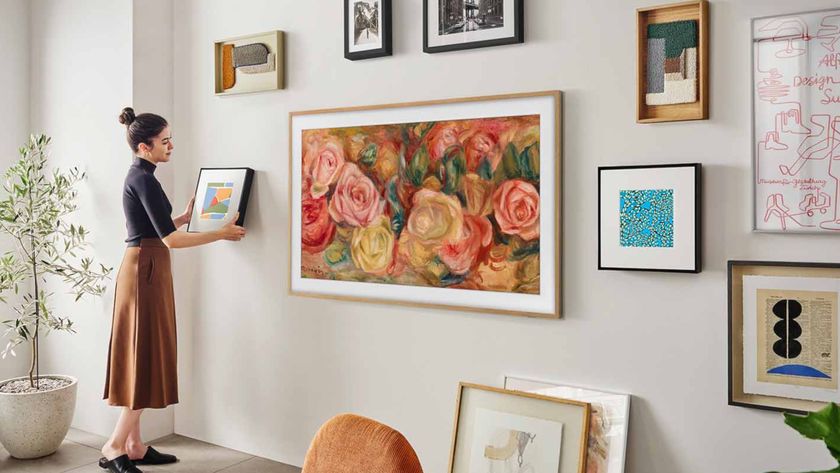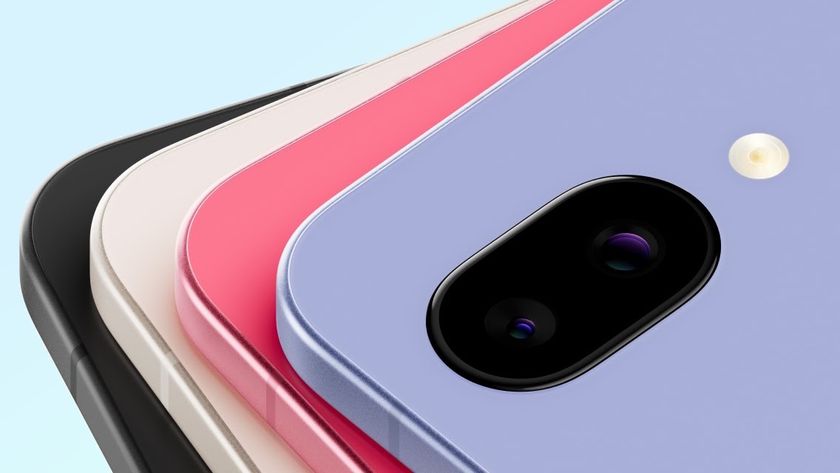Hisense CanvasTV vs Samsung The Frame: Which arty TV is right for you?
The Frame has a new challenger, and it’s looking promising

There’s a bit of a catch-22 for movie fans weighing up the pros and cons of the best TVs. Generally speaking, the bigger the screen the better the experience (assuming your room is spacious enough), but larger sets are undeniably an eyesore when not in use.
Until rolling or transparent panels become cheap enough to be in every home, the next best thing is to hide big-screen TVs in plain sight. Samsung popularized this with The Frame — a TV that moonlights as framed digital art when not in use. But it costs a pretty penny and, as a QLED panel, doesn’t offer the same contrast as the best OLED TVs.
Now HiSense has announced CanvasTV, which promises a similar experience but cheaper. Could this be a real contender? Here’s how the two stack up.
Hisense CanvasTV vs Samsung The Frame: Price, size and availability
The Frame, as a family of TVs, has existed since 2017. But the latest version, The Frame 2024, has been out for just a month, arriving on April 4. It comes in five sizes, starting at $999 for the 43-inch model, and rising to $2,999 for the massive 75-inch version.
Although Hisense’s CanvasTV will start at the same price when it’s released, that’s a bit misleading. It only comes in two sizes: 55 inches and 65 inches, which cost $999 and $1,299 respectively. For comparison’s sake, the two equivalent Samsung models will set you back $1,499 and $1,999 — a difference of $500 and $700.
There’s no exact release date for CanvasTV, but Hisense says it will launch in “late summer”. That’s any point up to September 22, if the company isn’t playing fast and loose with the definition of seasons.
Both TVs offer additional frame-like bezels at an extra cost, to make them even more gallery-like.
Hisense CanvasTV vs Samsung The Frame: Design and specs

The idea behind both televisions is the same. Rather than prioritizing brightness, the aim is for them to be believable as framed art when not in use. With that in mind, both use anti-glare display technology to try and mimic the texture of real paintings when in their respective arty modes.
Both provide 4K resolutions using QLED technology, both support ALLM and VRR and both will offer multi-channel 2.0.2 surround sound.
From the specs released at the time of writing, the big main difference is the refresh rate. While The Frame 2024 has a maximum of 120Hz (or, sensibly, 60Hz in Art Mode via VRR), CanvasTV has a native refresh rate of 144Hz. Unless you plan to use it as a monitor for PC gaming, which would be odd for an art-style TV, that’s mainly for bragging rights, but it’s interesting that Hisense can offer such an advantage for less money.
Of course, TVs are more than just raw specifications which often don’t tell the full story. We’ll have to wait to get our hands on the Hisense to see how the picture quality is in person, but we do have some early measurements from Samsung’s latest The Frame:
| Row 0 - Cell 0 | The Frame 2024 |
| SDR Brightness (10%, in nits) | 355 |
| Delta-E (lower is better) | 1.88 |
| Rec. 709 Gamut Coverage | 99.96 |
| HDR Brightness (10%, in nits) | 590 |
| UHDA-P3 Gamut Coverage | 91.9 |
| Rec. 2020 Gamut Coverage | 68.15 |
| Input Lag (ms) | 9.2 |
Hisense CanvasTV vs Samsung The Frame: Software

This is another point of difference. While The Frame uses a proprietary Samsung operating system, the Hisense alternative will run Google TV. That gives it a bit more flexibility, but Samsung has been in the television game for a long time, and its TV software is pretty sophisticated at this point.
Arguably the main software to look out for on an arty TV frame is the digital art it can display when not in use. As well as having over 2,500 pictures to purchase, the Samsung Art Store will now have a monthly curation of works that owners can display free of charge. Rather neatly, the Pantone Validated Artful Color certification means they’ll look pretty close to how they would in an actual gallery.
If you don’t want your living room to look like a very small museum, you can also put your own images or photo albums using the Samsung SmartThings app.
Hisense’s plans in this area are less clearly defined, but the company is promising “a curated world of free artistic masterpieces with a collection of pre-loaded works spanning abstract, modern, and renaissance styles”. Like The Frame, you can switch between art and personal photos, this time via a press of the “Art Mode” button on the bundled remote.
We already mentioned that Samsung has one eye on energy efficiency with its new variable refresh rate, and Hisense is thinking along similar lines. It comes with power-saving tech in Art Mode to adjust brightness via an energy sensor, and a motion sensor will turn off the screen when nobody is detected.
Hisense CanvasTV vs Samsung The Frame: Outlook

On paper, Hisense CanvasTV looks more than a match for Samsung’s The Frame. The revealed specs either match or better it, and all for significantly less money.
But the word “revealed” is doing quite a lot of heavy lifting there: We simply don’t know everything about it just yet, and it’s possible The Frame is superior on certain hidden metrics. Even if it remains a dead heat, specs can only tell you so much: in practice, picture quality might be vastly superior on one over the other.
We simply won’t know until we’ve put both through their paces. But that doesn’t make CanvasTV any the less exciting, and it’s still well worth keeping an eye on if you value living room aesthetics and value over raw screen size.
Sign up to get the BEST of Tom's Guide direct to your inbox.
Get instant access to breaking news, the hottest reviews, great deals and helpful tips.
Freelance contributor Alan has been writing about tech for over a decade, covering phones, drones and everything in between. Previously Deputy Editor of tech site Alphr, his words are found all over the web and in the occasional magazine too. When not weighing up the pros and cons of the latest smartwatch, you'll probably find him tackling his ever-growing games backlog. Or, more likely, playing Spelunky for the millionth time.























